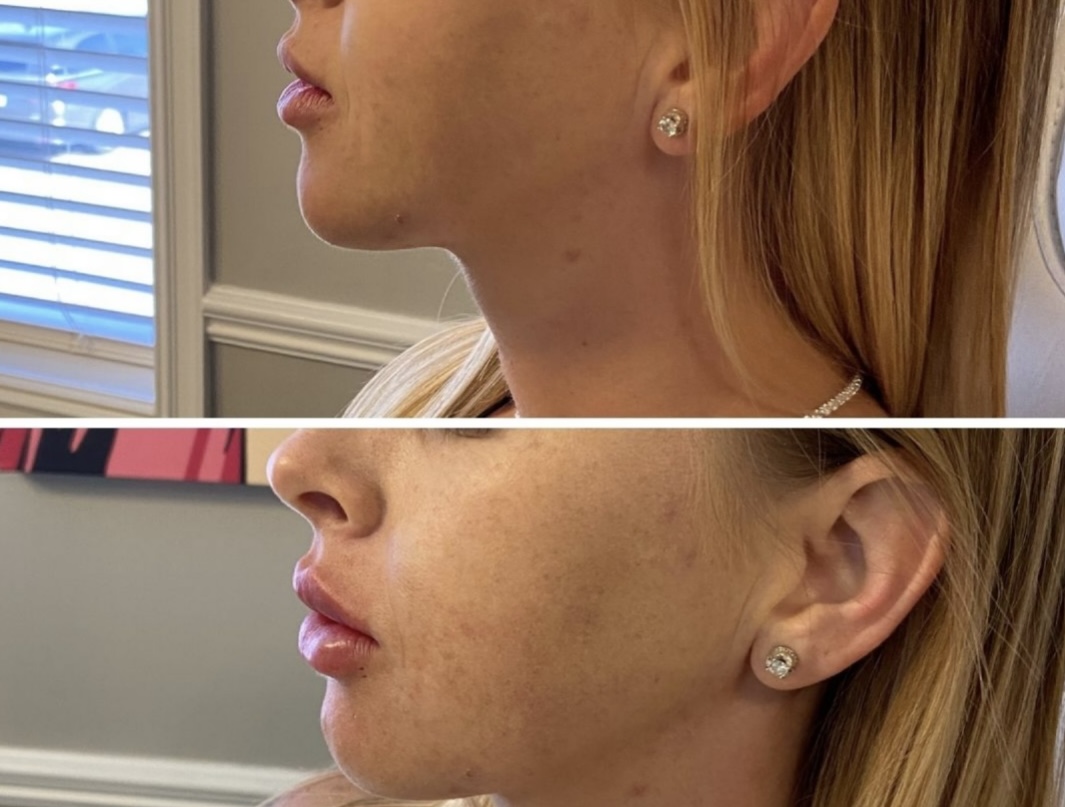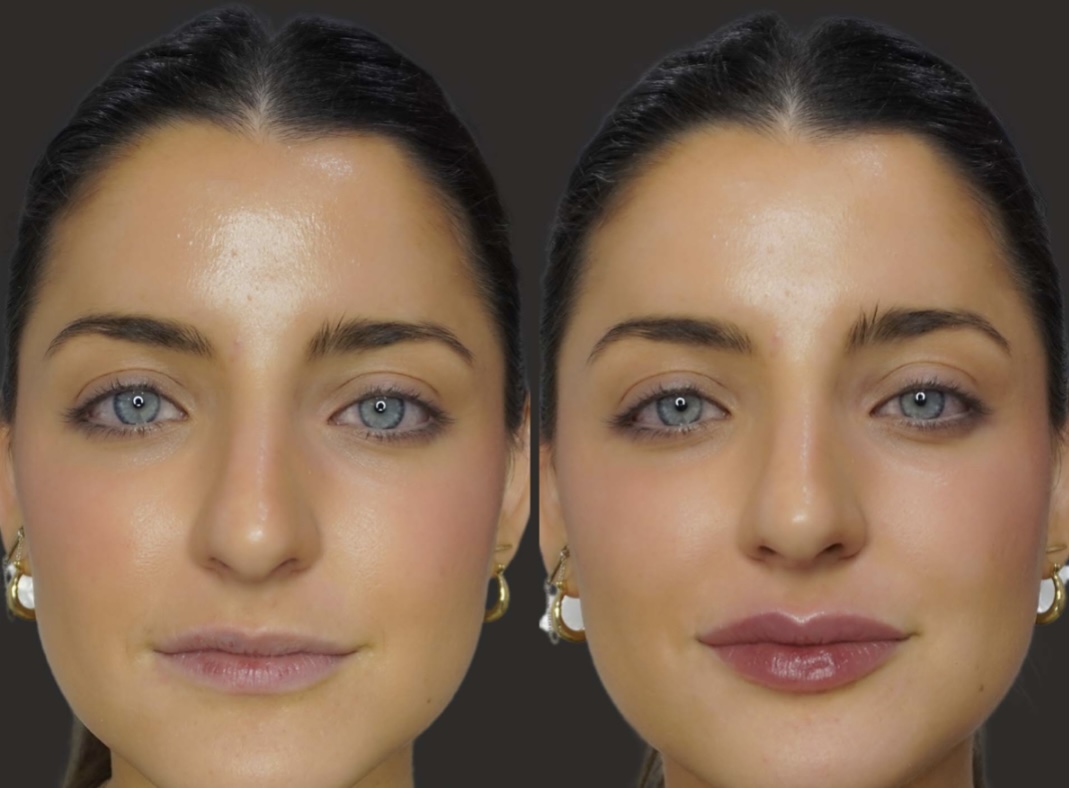Having plump lips has always been popular, but now more and more folks prefer getting lip fillers instead of using lipstick or gloss for that plumping effect. This article has all the info you need about making your lips plumper. Whether you’re curious about how long lip fillers stay, how much they cost, or just want to know what happens before your first treatment, we’ve got you covered. Keep reading to find out everything you need to know about lip fillers.
What are lip fillers
Lip fillers are injections that add volume to your lips and belong to the category of dermal fillers. They consist of synthetic hyaluronic acid (HA), which is a natural substance found in your body. Various brands of lip fillers are available, such as Juvederm®, Restylane®, and Perlane®. The effects are temporary, with the duration varying depending on the type of filler used.
Types of Lip Fillers
There are different types of lip fillers, each with its own set of characteristics. The most common types include
Hyaluronic Acid Fillers (HA Fillers)
Juvederm: This brand offers various formulations, such as Juvederm Ultra, Juvederm Ultra Plus, and Juvederm Volbella, designed for different areas of the face, including the lips.
Restylane: Another popular brand, Restylane has products like Restylane Silk specifically formulated for lip enhancement.
Collagen Fillers
CosmoPlast and CosmoDerm: These are bovine collagen-based fillers. However, collagen fillers are less commonly used today compared to hyaluronic acid fillers due to the risk of allergic reactions.
Poly-L-Lactic Acid (PLLA) Fillers
Sculptra: While Sculptra is mainly used for facial volume restoration, it can also be used for subtle lip augmentation. It stimulates the production of collagen over time.
Calcium Hydroxylapatite (CaHA) Fillers
Radiesse: This filler contains calcium hydroxylapatite microspheres in a gel. It’s often used for deeper wrinkles and can also be used for lip augmentation.
Fat Injections
Autologous Fat Transfer: This involves harvesting fat from one part of your body (usually abdomen or thighs), purifying it, and injecting it into the lips. It’s a more natural option as it uses the patient’s own tissue.
Polymethyl Methacrylate (PMMA) Fillers
ArteFill (Bellafill): This is a semi-permanent filler containing PMMA microspheres. It provides long-lasting results but is less commonly used for lip augmentation.
What are the benefits and risks of lip filler
Benefits of Lip Fillers
Enhanced Lip Volume: Lip fillers can add volume to the lips, providing a fuller and plumper appearance.
Improved Lip Shape: Fillers can be used to enhance lip contours and shape, addressing asymmetry or adding definition.
Reduced Fine Lines: Some fillers, particularly those containing hyaluronic acid, can help smooth out fine lines and wrinkles around the lips.
Quick Procedure: Lip filler injections are typically quick, often taking less than an hour, and require minimal downtime.
Temporary Results: For individuals who are unsure about permanent changes, many lip fillers offer temporary results, allowing for adjustments over time.
Risks and Considerations
Bruising and Swelling: Common side effects include temporary bruising and swelling at the injection site. These usually subside within a few days.
Allergic Reactions: While rare, allergic reactions to the filler material can occur. It’s important to discuss any allergies with the healthcare provider before the procedure.
Infection: Any injection procedure carries a risk of infection, although it is relatively low. Strict adherence to hygiene and proper aftercare can minimize this risk.
Lumps or Irregularities: In some cases, uneven distribution of the filler or the formation of lumps may occur. This can often be corrected with additional treatment.
Temporary Results: The temporary nature of some fillers means that repeat treatments are necessary to maintain the desired appearance.
Migration or Shifting: Rarely, filler material may shift from the intended injection site, causing an uneven result. This can sometimes be corrected with massage or additional injections.
Overfilling or Underfilling: Achieving the desired outcome requires skill and experience. Overfilling can lead to an unnatural appearance, while underfilling may not produce the desired results.
How long do lip injections last ?
Lip fillers don’t last forever – their effects typically stick around for about six months to a year. After that, the filler breaks down and the body absorbs it. How long your plump lips stay that way depends on a few things, like the kind of filler used, where it’s injected, and how fast your body works (which is influenced by age and metabolism).
Usually, people enjoy their fuller lips for several months before they might need a little touch-up. There are some newer fillers that hang around even longer, up to 18 months, and lots of folks are liking this option more and more. So, while it’s not a forever change, you can count on enjoying your enhanced look for a good while before thinking about another visit to the cosmetic pro.
How to Prepare for Lip Fillers
Before getting lip fillers, start with a talk with the doctor. They’ll discuss how you want your lips to look, making sure it fits your face. Your face shape matters more than just having full lips. Show some pictures to help the doctor understand what you want.
Also, check your doctor’s work on Instagram to see if it matches what you want. Before the appointment, avoid certain things like aspirin and alcohol because they can make swelling and bruising worse. It’s good to skip them before getting the injections.
Lip fillers before and after 1ml: What to expect
What happens before a lip filler proceduce?
Before the lip filler procedure, it’s common for lips to appear thin or flat, lacking a well-defined Cupid’s bow or line. Additionally, fine lines or wrinkles around the mouth may be noticeable. These features contribute to an overall look that may be less plump and sculpted than desired.
What happens during a lip filler procedure?
In a lip filler procedure, your healthcare provider will put numbing cream on your lips. This cream, often containing benzocaine, lidocaine, and tetracaine (BLT), makes your lips numb within 15 to 30 minutes, ensuring a pain-free and comfortable process. If you’re allergic to BLT, they might use a nerve block injection to numb your lips, taking about 15 to 30 minutes.
Using a thin needle, your provider will inject about 1 milliliter (mL) of filler into different parts of your lips. It won’t go deeper than 2.5 millimeters (mm). You might feel a pinch but not pain. They may use an ice pack to reduce swelling and bruising. The whole thing can take 30 minutes to two hours.
What happens after a lip filler procedure?
After the procedure, the doctor might gently rub your lips and put some ice on them to help the filler soak in. They will keep an eye out for any issues like feeling dizzy or sick for about 15 minutes. Once everything is okay, you can go home. Your lips might be a bit puffy and have some bruises, but that usually gets better in a day or two, though sometimes it takes up to a week.
After about a week, your lips will look fuller and plumper, making your pout stand out more. The shape of your Cupid’s bow and lips will become clearer, giving you a more sculpted appearance. Plus, any lines around your mouth will look softer or less noticeable.
You can refer to some pictures before and after lip injections.


Lip Fillers Aftercare
To ensure your lip plumping process goes well, follow these steps. First, apply ice to reduce swelling or pain, and be gentle with your lips for the first 24-48 hours – don’t touch them much as they are very sensitive. Try not to move your lips too much, drink water, and avoid using lipstick or lip balm for at least a day. Also, when brushing your teeth, be gentle to avoid discomfort. During this time, do not do heavy exercise for a day and follow exactly what your doctor says after treatment. Keep all your follow-up appointments to make sure everything goes well and get any changes if needed. These measures collectively contribute to a smooth and effective recovery process after lip augmentation surgery.
Average cost of lip fillers
The price of lip fillers can be different depending on where you are, the skills of the person doing it, and the kind of filler they use. On average, getting your lips done can cost a few hundred to over a thousand dollars. The cost often shows how experienced the person doing it is and the quality of the filler they use. Some places might also charge based on how much filler they use, usually per syringe. It’s a good idea to talk to a qualified person to get the exact cost and make sure your lip filler experience is safe and good.
How Do I Choose the Right Cosmetic Clinic?
Choosing the right doctor is super important for making your lip filler procedure work well. Look for a clinic with lots of experience and good reviews from other people. It’s also great if the clinic has a friendly team that can help answer your questions. A good clinic usually gives you a free first meeting before any treatment. This lets you meet the doctor, ask questions, and get advice that fits your needs. Doing these things helps you make a smart choice and increases the chance of getting the results you want.
FAQ
1. When should I see my healthcare provider after a lip filler?
Plan to meet with your healthcare provider again two weeks after getting your lip fillers. They will check your lips, and you can talk about the final results. If you want more fullness, you can discuss using more filler.
2. When can I eat or drink after a lip injection?
Wait until the numbness wears off before eating to avoid accidentally biting your lips and affecting the filler. Also, avoid messy foods for at least a day. Don’t use straws, smoke, or pucker your lips for 24 hours. Skip alcohol during this time to reduce the risk of bruising.
3. Can you get lip fillers while pregnant?
No studies have shown if getting lip fillers during pregnancy is safe. Because of this, the FDA has not approved the use of lip fillers while pregnant.
4. Are lip fillers permanent?
Lip fillers are not permanent. They gradually fade away, typically within 12 to 18 months after the procedure, depending on your metabolism. To keep the volume you want, you might need regular touch-up treatments.
5. Will lip fillers ruin your lips?
If you don’t get lip fillers from someone who knows what they’re doing, your lips might get messed up. They could stretch too much, the skin around them might die, the filler might get hard, or the places where they put the filler might get infected.
Conclusion
Before you start changing your appearance with lip fillers, it’s important to think carefully and make smart choices. Talking to a qualified healthcare professional is really important. They can help you understand what you want, check if you’re a good fit for the procedure, and suggest the right kind of filler and treatment plan for you. Keep in mind, getting lip fillers isn’t a one-time fix. The choice to get them is all about what you personally want and hope to achieve.




